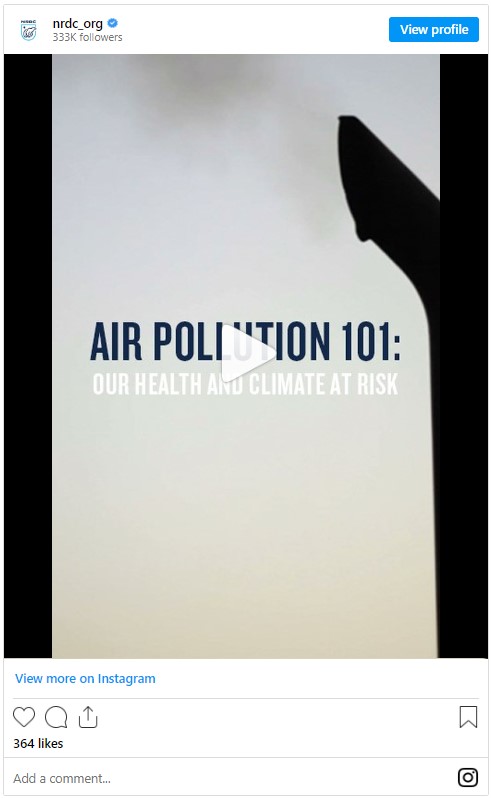Air quality legislation and implications for health – World Health Organization (WHO)

Report on Air Quality Legislation and its Role in Achieving Sustainable Development Goals
Introduction: The Health Imperative for Air Quality Management
Extensive evidence confirms the harmful health effects of air pollution, necessitating robust legislative action to protect public health. The World Health Organization (WHO) Air Quality Guidelines provide evidence-based, non-binding recommendations that serve as a critical foundation for countries developing air quality legislation. The primary objective of such legislation is to mitigate health risks and advance global health targets, directly contributing to SDG 3 (Good Health and Well-being) by reducing deaths and illnesses from air pollution.
Aligning National Standards with Global Health and Sustainability Targets
An analysis of global air quality governance reveals significant variation in the adoption and stringency of national standards. While 128 countries have publicly available air quality standards, their alignment with WHO recommendations is inconsistent. This discrepancy hinders progress towards key Sustainable Development Goals.
- SDG 3 (Good Health and Well-being): The alignment of national air quality standards with WHO guidelines is fundamental to achieving Target 3.9, which aims to substantially reduce the number of deaths and illnesses from hazardous air pollution.
- SDG 11 (Sustainable Cities and Communities): Effective air quality management is central to Target 11.6, which focuses on reducing the adverse per capita environmental impact of cities by improving air quality.
The WHO publication, Air quality legislation and implications for health, underscores the necessity of embedding stringent, health-protective standards within national law to effectively pursue these goals.
Key Legislative and Governance Components for SDG Attainment
Effective air quality management requires a comprehensive legislative framework supported by strong governance. This framework is essential for building the institutional capacity needed to achieve environmental and health-related SDGs.
Core Policy Measures
Legislation must integrate various policy measures that create co-benefits for multiple SDGs, including SDG 7 (Affordable and Clean Energy) and SDG 13 (Climate Action).
- Source control regulations
- Integrated land use planning
- Sustainable transportation policies
Pillars of Effective Governance
The success of these policies depends on strong institutional foundations, which are a cornerstone of SDG 16 (Peace, Justice and Strong Institutions).
- Strong Air Quality Laws: Enforceable legislation that sets clear, health-protective standards.
- Reliable Monitoring: Accurate and consistent data collection to assess air quality, track progress, and ensure compliance.
- Robust Governance: Transparent and accountable institutions responsible for implementing and enforcing air quality laws.
Collaborative Frameworks for Policy and Science
The development of effective air quality policy is supported by the WHO Air Quality, Energy, and Health Science and Policy Summaries (SPS). These documents provide decision-makers with concise overviews of scientific evidence to inform policy. The creation of these summaries exemplifies SDG 17 (Partnerships for the Goals) by utilizing a multistakeholder consultation process.
This collaborative model brings together key partners to bridge the gap between science and policy, including:
- WHO Advisory Groups (SAG and GAPH-TAG)
- WHO Collaborating Centres
- United Nations agencies
- Experts from academia and civil society
Relevant Sustainable Development Goals (SDGs)
-
SDG 3: Good Health and Well-being
- The article directly connects to SDG 3 by emphasizing the “harmful health effects of air pollution” and the goal of developing legislation and standards to “protect public health.” The entire premise of the WHO’s work described is to mitigate the health risks associated with poor air quality.
-
SDG 11: Sustainable Cities and Communities
- This goal is addressed through the focus on managing air quality, which is a critical environmental issue in cities and human settlements. The article mentions that legislation includes measures like “land use planning, and transportation policies,” which are key components of urban management. The aim is to improve the environmental quality of where people live.
-
SDG 17: Partnerships for the Goals
- The article highlights the collaborative nature of developing the WHO’s policy summaries. It explicitly states they are created through a “multistakeholder consultation process” involving WHO Advisory Groups, WHO Collaborating Centres, UN agencies, academia, and civil society. This demonstrates a partnership approach to sharing knowledge and expertise to achieve global goals.
Specific SDG Targets
-
Target 3.9: By 2030, substantially reduce the number of deaths and illnesses from hazardous chemicals and air, water and soil pollution and contamination.
- This target is directly relevant as the article’s central theme is mitigating the “harmful health effects of air pollution.” The development and implementation of “air quality legislation” and “standards that protect public health” are the primary mechanisms discussed to achieve this reduction in illness and death.
-
Target 11.6: By 2030, reduce the adverse per capita environmental impact of cities, including by paying special attention to air quality and municipal and other waste management.
- The article’s focus on creating “air quality standards” and supporting them with “reliable monitoring and governance” directly aligns with this target’s requirement to pay “special attention to air quality.” The mention of 128 countries having publicly available air quality standards is a direct measure of action towards this target.
-
Target 17.16: Enhance the global partnership for sustainable development, complemented by multi-stakeholder partnerships that mobilize and share knowledge, expertise, technology and financial resources…
- The process described for creating the WHO Science and Policy Summaries is a perfect example of this target in action. The article details a “multistakeholder consultation process” that mobilizes and shares knowledge among “experts from WHO Advisory Groups,” “UN agencies,” “academia and civil society” to support decision-makers.
Implied Indicators for Measuring Progress
-
Indicator for Target 3.9 (Implied: Mortality rate attributed to ambient air pollution)
- While not explicitly named, this indicator is heavily implied. The article’s purpose is to guide actions that “protect public health” from the “harmful health effects of air pollution.” The ultimate measure of success for these actions would be a reduction in the very deaths and illnesses the target aims to prevent.
-
Indicator 11.6.2: Annual mean levels of fine particulate matter (e.g. PM2.5 and PM10) in cities (population weighted).
- This indicator is implied through the discussion of “WHO’s Air Quality Guidelines,” which “provide… recommendations for limits on specific air pollutants.” The need for “reliable monitoring” mentioned in the article is precisely for measuring these pollutant levels to track progress and enforce standards. The existence of standards in 128 countries is a policy-level step toward monitoring and controlling these levels.
-
Indicator for Target 17.16 (Implied: Mechanisms for multi-stakeholder partnerships)
- The article describes the mechanism itself: the “multistakeholder consultation process” used to develop the WHO summaries. The existence and functioning of this collaborative process, which brings together diverse groups like “UN agencies,” “academia,” and “civil society,” serves as a qualitative indicator that such partnerships are being utilized to share knowledge and support the SDGs.
SDGs, Targets, and Indicators Analysis
| SDGs | Targets | Indicators |
|---|---|---|
| SDG 3: Good Health and Well-being | Target 3.9: Substantially reduce deaths and illnesses from air pollution. | Implied Indicator: Reduction in mortality and morbidity rates attributed to air pollution, measured by tracking the “harmful health effects” mentioned. |
| SDG 11: Sustainable Cities and Communities | Target 11.6: Reduce the adverse per capita environmental impact of cities, paying special attention to air quality. | Indicator 11.6.2 (Implied): Annual mean levels of specific air pollutants, measured through the “reliable monitoring” systems and guided by the “WHO’s Air Quality Guidelines.” |
| SDG 17: Partnerships for the Goals | Target 17.16: Enhance global and multi-stakeholder partnerships that mobilize and share knowledge. | Implied Indicator: The existence and operation of the “multistakeholder consultation process” involving WHO, UN agencies, academia, and civil society to produce policy summaries. |
Source: who.int

What is Your Reaction?
 Like
0
Like
0
 Dislike
0
Dislike
0
 Love
0
Love
0
 Funny
0
Funny
0
 Angry
0
Angry
0
 Sad
0
Sad
0
 Wow
0
Wow
0












































































